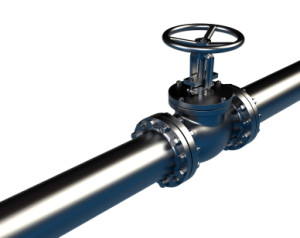by gabriel_sales | Aug 15, 2013
 Building landing pages that convert is both a science and an art. You need to present information in a logical way with a visually inviting format—without selling too hard. Note easy, but not impossible either.
Building landing pages that convert is both a science and an art. You need to present information in a logical way with a visually inviting format—without selling too hard. Note easy, but not impossible either.
Here are 5 Tips for Landing Page Conversion Success:
- Get rid of the “Submit” button.
I know that the word “submit” is a clear denotation for what is happening when someone fills out a form on a landing page but tell me, what’s exciting about “submitting” anything? Ever? Nothing. So, don’t put it on your landing page forms.
Make your form button a place where you restate the value of what your prospects are getting when they fill out your form, i.e. “Get My White Paper Now” or “Send Me More Information”. Like Amazon’s “Buy with 1-Click” button, reminding people of what they are getting out of the transaction makes them much more likely to actually click.
2. Remove extraneous links.
With a homepage on a website, having a navigation bar along the top and links to recent blog posts along the side is probably a good idea. You want people to be able to find a wide range of information with ease. Your goal for landing pages should be different; a good rule of thumb is ‘one goal for one landing page’.
This means having a complex navigation bar and links on the side or in the text is a distraction from your overall goal. If your goal is to get people to sign up for a webinar, make that the only action available to them on the page and take away all other navigation. If your goal is to offer educational content, you can offer it in various mediums, just don’t also put a link for a webinar invite alongside your content offers.
3. State the value in the headline.
Headlines on landing pages are extremely important. The headline is usually the first thing the eye sees when they come to your landing page, so it needs to grab attention. Make the headline the place where you make the value of your landing page offer glaringly obvious. For example, use “5 Easy Steps to Build Your Own Lead Generation System” rather than “Download Our New Lead Generation White Paper”. The clearer you can make the value, the closer you are to having landing pages that convert.
4. Say less.
While you do want to make sure that the value you are offering is clearly stated, it does not need to be overstated. When describing your landing page offer, it is usually a good idea to offer short sentences and bullet points.
When people come to a landing page, they want to quickly determine whether or not to leave. While it is easy to quickly scan through bullet points, reading through long paragraphs takes time, and if I can’t find the information I want in ten seconds or less, I’m gone. If you need to explain your offer in sentences that’s fine, just use very short paragraphs and italics or bold for emphasis.
5. Make the form “pop”.
Landing pages should be highly visual, and it’s great to use graphics and pictures to grab attention and help tell a story. That being stated, you want to make sure that your visuals don’t distract from your overall goal: building landing pages that convert. To do this, make sure your landing page form stands out and is visually inviting. This can be done easily by making the form a different color, giving it a 3-D shadow, or changing the font.
If you would like more information on landing pages, you can read more educational blogs by clicking here. If you have any questions, please feel free to contact us.
by gabriel_sales | Aug 14, 2013
This is the second part of a two-part blog series on agile marketing for B2B. For part one, click here.
 In the first half of this blog series, we explained that B2B agile marketing starts with research and observation. By looking at industry data, market reports and your competition, you get an understanding of the overall landscape you are trying to sell in. Taking that into consideration, you then listen to your current customer-base and your prospects to understand how they view their problem and what they want from a solution.
In the first half of this blog series, we explained that B2B agile marketing starts with research and observation. By looking at industry data, market reports and your competition, you get an understanding of the overall landscape you are trying to sell in. Taking that into consideration, you then listen to your current customer-base and your prospects to understand how they view their problem and what they want from a solution.
You can listen to your prospects and customers directly and indirectly. Using the direct approach, you can call them, email them or ask them to take an online survey. When using a direct approach, you should ask questions focused on experience (i.e. “Was this helpful in your research of Problem X?” “What could we have done better to improve your experience?”). You can do indirect research for agile marketing with marketing automation. Using a marketing automation platform, you can observe and track prospects’ online behaviors to give you information regarding the effectiveness of specific campaigns or pieces of content. For example, you could determine that a specific email had a 20% better click-through rate than any other email you’ve sent out.
Using the information you gather from the industry and your own internal efforts, the next step in agile marketing is to refine your messaging and tactics. It is important to remember that with agile marketing, change happens at an incremental level. This means that if a white paper you sent out had a low download rate, you should try changing the title or description before you rewrite the entire thing. The point is to make small improvements quickly, not to start over from scratch every quarter.
Testing is another important aspect of agile marketing and is another place where marketing automation can be extremely valuable. In order to ensure the modifications you’ve made to your strategy and tactics are effective, you should test them with a small audience. For example, if you are going to blast an email campaign to 5,000 people, send it to 250 people first as a test group. Using marketing automation for agile marketing, you can look at things like download, click-through or response rates. If the numbers are where you want them to be, you can send out the rest of the blast. If they aren’t, you know it is time to go back to the drawing board and have saved yourself from sending ineffective marketing to thousands.
When done correctly, agile marketing with marketing automation allows you to create marketing content and execute marketing campaigns with greater efficiency and less risk. Because your decisions are based on research and measurement rather than abstract belief, your marketing efforts become more effective and less labor-intensive, which means less work for more money!
For more on the benefits of agile marketing with marketing automation, click here. If you have any questions, please feel free to contact us.
by gabriel_sales | Aug 14, 2013
This is part one of a two-part blog series on agile marketing for B2B.
 If you are a B2B marketer, there is a good chance your current marketing strategy and tactics are slightly different than they were a year ago. They might even be different than they were six months ago.
If you are a B2B marketer, there is a good chance your current marketing strategy and tactics are slightly different than they were a year ago. They might even be different than they were six months ago.
These type of fast-paced adjustments reveal an underlying movement in the world of marketing toward greater adaptability and agility. “Agile marketing” is the new buzzword floating through the B2B blogosphere, and in order to stay ahead of the game, you need to know what it is and how to do it.
“Agility means that you are faster than your competition. Agile time frames are measured in weeks and months, not years.” ~ Michael Hugos
For B2B marketing, agile marketing is ability to observe your industry, listen to your market, and look at internal metrics in order to quickly respond with incremental modifications to your strategy and tactics. It’s really about using observations and data to constantly refine your process based on your overall goals. This is most easily done using marketing automation, which gives you a “behind-the-scenes” view of your sales and marketing process from start to finish.
B2B agile marketing starts with research and observation. By looking at industry data, market reports and your competition, you get an understanding of the overall landscape you are trying to sell in. Taking that into consideration, you then listen to your current customer-base and your prospects to understand how they view their problem and what they want from a solution.
For the second half of this blog series click here.
For an in-depth look at why agile marketing is now a required strategy to stay competitive, you can download our white paper on “New Rules for B2B Sales & Marketing in 2013”.
by gabriel_sales | Aug 9, 2013
This blog article is a short overview of B2B small business marketing in the digital era.
 As a small business, you don’t have anywhere near the amount of resources to develop a marketing strategy as your large business and Fortune 500 competitors.
As a small business, you don’t have anywhere near the amount of resources to develop a marketing strategy as your large business and Fortune 500 competitors.
That being said, the democratic nature of the internet means that even the smallest businesses have the chance to compete and grow. In other words, a viral marketing video is just as likely to come from a five-person start-up as it is an enterprise, if that startup has taken the time to understand their customers and produce content that speaks directly to their needs.
There are many ways you can go about small business marketing, and they pretty much all involve the internet. Here are several basic marketing tactics that any small business can leverage to find and connect with more customers:
Search Engine Optimization
You’ve probably heard talk about “how to improve your SEO,” which simply means getting higher on Google results pages. Google and other search engines have specific formulas for determining what pages rank the highest for each keyword. They take into consideration factors like keyword density, urls, meta descriptions and more when ranking pages for specific search terms. In order to show up higher on results pages, you need to “optimize” every page of your website to make it easy for Google to know what each page is about.
Understanding the rules of SEO is somewhat complex, but not impossible. Simply changing the urls for all of your blog posts might get you from page three to page one.
Social Media Marketing
For many small businesses, social media has been the best thing since sliced bread. That’s because pretty much all of your customers are already on social media, waiting for you to connect with them. Using social media networking sites sites like Facebook, Twitter, LinkedIn and Google+, you can create profiles and push marketing messages within communities that are your ideal market. Social media marketing also helps to humanize your brand and allows your customers to get to know you better.
Blogging
Blogging can be considered both an SEO strategy and a social media strategy, depending on your goals. Starting and maintaining a company blog gives you much more space to optimize keywords for search engines. Each blog post you write can have a slightly different keyword variant, allowing you to reach a wider customer base. Blogs can also be considered social media, as your prospects and customers can “follow” or “subscribe” to your blog to receive updates every time you publish something new. You can also post links to your blog articles on your Facebook, Twitter and LinkedIn profiles. If your content is valuable enough to your readers, they may share your content with their friends or followers, which becomes free advertising for you.
For more on small business marketing for B2B, click here. If you have any questions, please feel free to contact us.
by gabriel_sales | Aug 7, 2013
This blog article is an overview of sales pipeline management and its importance in the B2B world.
For some reason, a lot of B2B companies approach their sales process like a little kid approaches a magic trick; if you just believe enough, something amazing will happen.
While confidence is a critical part of success, belief in your own greatness is not going to convert MQLs to SALs. B2B companies need to think of sales as a process to be managed that is backed by logic and data.
 Management of your sales process should be focused on your pipeline. A sales pipeline “is the amount of business you attempt to close in a given month, quarter or year” (inc.com). You can manage the data of your sales pipeline using spreadsheets or sales and marketing technologies and then use that data to give you insights as to how to forecast better, improve your conversion rate and refine your marketing messages.
Management of your sales process should be focused on your pipeline. A sales pipeline “is the amount of business you attempt to close in a given month, quarter or year” (inc.com). You can manage the data of your sales pipeline using spreadsheets or sales and marketing technologies and then use that data to give you insights as to how to forecast better, improve your conversion rate and refine your marketing messages.
B2B sales pipeline management consists mostly of working with different metrics. By looking at the percentage of your entire pipeline that closes every quarter, you can begin to predict future demand with greater accuracy. You can also look at more specific metrics as to how successful a certain piece of marketing content is for conversion. For example, if your data tells you that 75% of people who download your white paper end up closing, you probably want to make sure that every single MQL sees that white paper.
Managing your B2B sales pipeline also helps you keep track of leads who aren’t ready to buy right away. A lot of companies have discovered that some leads that enter their pipleline don’t close until a year later. Without a clear understanding of how long your typical buying cycle is and what activities signal buying readiness, you might give up on clients who are simply taking a little bit more time to analyze all of their options.
Overall, B2B sales pipeline management turns guesswork into a refined process with measurable results. When you have total visibility of your sales process and marketing efforts, you have certainty that each move you make has been well-thought out and is backed by data.
If you would like more information on B2B sales pipeline management, click here. If you have any questions, please feel free to contact us.
 Building landing pages that convert is both a science and an art. You need to present information in a logical way with a visually inviting format—without selling too hard. Note easy, but not impossible either.
Building landing pages that convert is both a science and an art. You need to present information in a logical way with a visually inviting format—without selling too hard. Note easy, but not impossible either.




